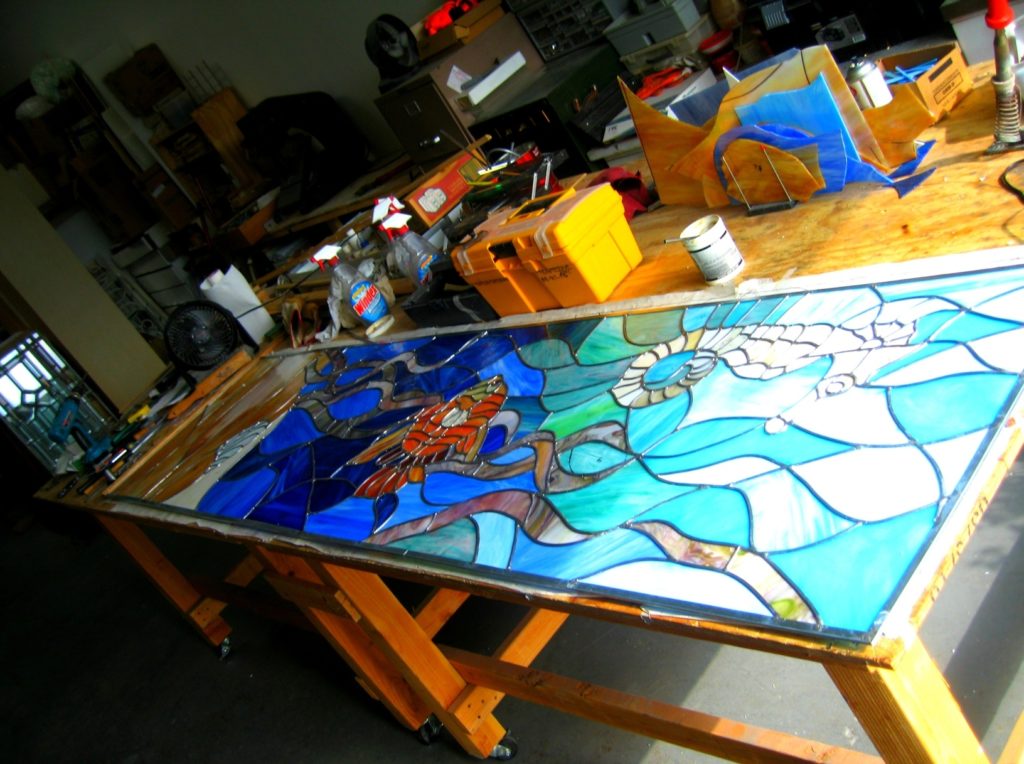So what exactly is stained glass? How about this thing they call leaded glass?
You might wonder: what’s in a name?
As you’ll hear these terms get mentioned, let’s clarify what they really mean.
Originally, when stained glass first evolved, artisans would draw onto or would otherwise color glass pieces using various pigments. These pieces would then get fired up and the design would melt onto it. Essentially, this glass became “stained” and so the term STAINED GLASS came into being.
These individual pieces would then get assembled together to form a composition. Each would become surrounded by a flexible grooved rod made of lead known as CAME or LEAD CAME. LEAD is a very heavy, dense greyish metal that is flexible and so bends easily. The finished composition is then one that is held together by this frame. This frame is known as a PANEL. A single panel or several panels would then comprise a window or a series of windows.
Because of the use of lead, this technique and product also came to be known as LEADED GLASS.
This basic, traditional assembling procedure is still used today, as it is one of superior quality and incredible durability and longevity.
Nowadays, the glass is manufactured commercially by specialist companies and comes in all sorts of colors, patterns, styles and textures, usually in individual sheets of various sizes. Many are even clear and without color. This readily available specialty glass is known today as ART GLASS.
Commercially manufactured art glass is what is used today to create compositions in leaded glass. And despite the fact that the art glass used can be devoid of color, the traditional term “stained glass” has been retained and is, today, interchangeable with “leaded glass”.
In this regard, “stained glass” is a bit of a misnomer.
Again, they both pretty much mean the same thing: a composition comprised of individual glass pieces (of whatever shapes, colors, styles or textures) encased and held together by individual pieces of lead.


